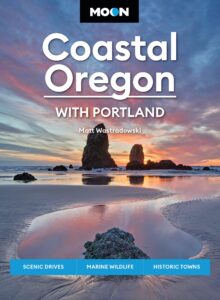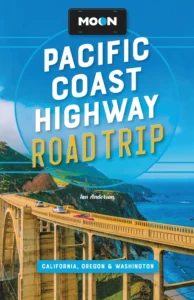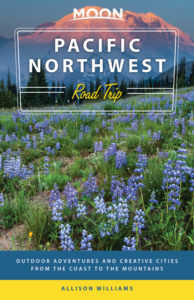Astoria and Fort Clatsop
Astoria
The oldest American city west of the Rockies, Astoria (pop. 9,976) is an upbeat mix of lovingly preserved past and busy contemporary commerce. Houses perched atop high hills overlook the Columbia River, creating a favorite backdrop for Hollywood movies. Despite its picturesque appearance, Astoria supports an active commercial fishing fleet, and dozens of tugboats guide tankers and container ships across the treacherous sandbars.
Founded by and named after fur-trade magnate John Jacob Astor in 1811, Astoria protected the tenuous U.S. claim to the Pacific Coast until the opening of the Oregon Trail brought substantial settlement. By the turn of the 20th century, Astoria was still Oregon’s second-largest city, but the downturn in both salmon fishing and logging since the end of World War II has caused an economic decline that town officials look to tourism to overcome.
Astoria Travel Map
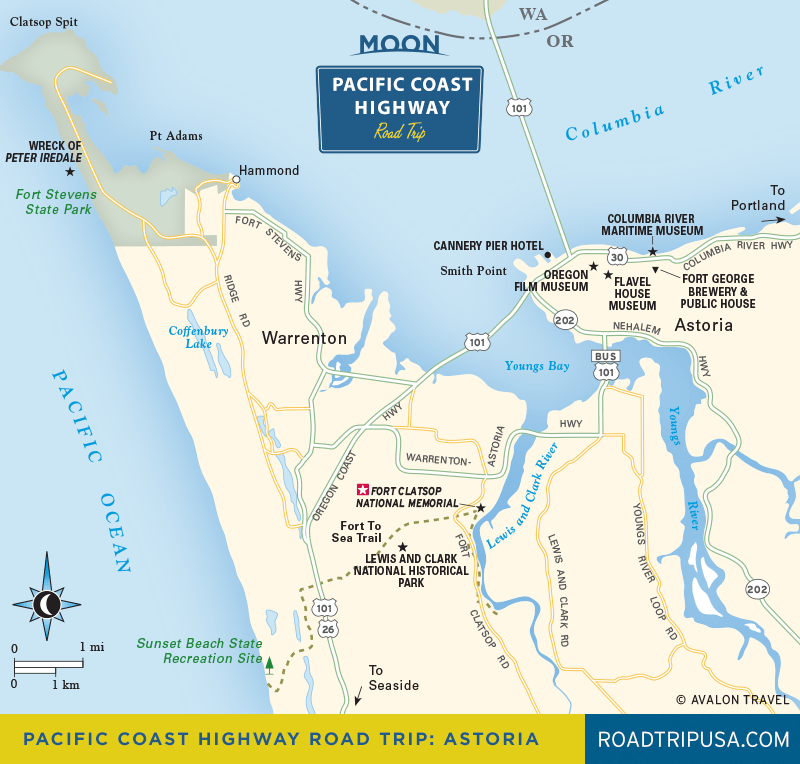
US-101 crosses the Columbia River on the toll-free high-level Astoria-Megler Bridge, completed in 1966, which drops you at the west end of the downtown waterfront. To get a sense of the lay of the land, follow the signs along 16th Street up Coxcomb Hill to the Astoria Column (daily dawn-dusk, $5 per car) for a view of the Columbia meeting the ocean, the coastal plain south to Tillamook Head, and the snowcapped Cascade Range (including, on a clear day, Mt. St. Helens) on the eastern horizon. A mosaic chronicling local history is wrapped like a ribbon around the column, tracing the many significant events in the town’s past. A spiral staircase climbs to the top.
Back downtown Flavel House Museum (441 8th St., daily, $6) is a Queen Anne-style Victorian showplace restored as an elegantly furnished museum of wealthy Columbia River pilot George Flavel. A half mile east, near the foot of 17th Street on the north side of waterfront Marine Drive, the Columbia River Maritime Museum (503/325-2323, daily, $14) displays a large and impressive collection that tells the story of the lifeblood of this community: the Columbia River.
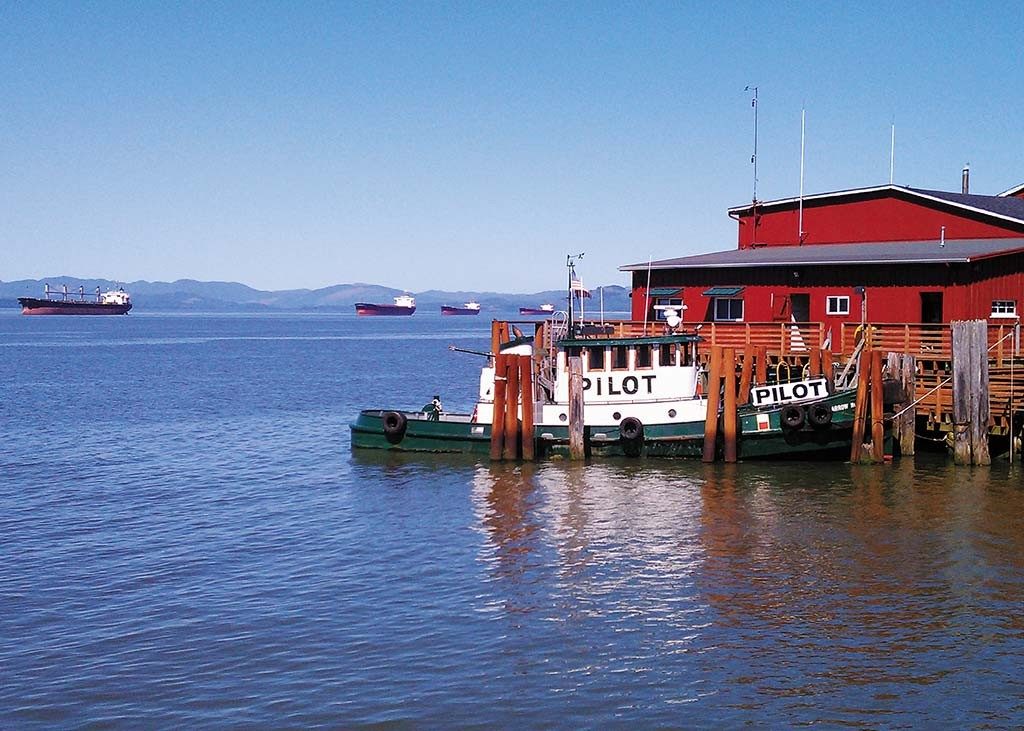
Fortify yourself at one of the many good seafood places along the water, starting at the funky and ever-popular Columbian Café (1114 Marine Dr., 503/325-2233, breakfast and lunch only), where, for nearly 40 years, chef Uriah Hulsey has been preparing all sorts of fresh veggie-friendly food in an impossibly cramped galley kitchen. Inspired by the chef’s youthful immersion in the Cajun-Creole traditions of Louisiana, meals are massive yet reasonably priced, so be sure to arrive with an appetite. The café has been so popular, they’ve expanded next door with a Voodoo Room cocktail bar and pizza joint, which spills over into the restored 1940s movie house next door. There’s no better place to get a feel for Astoria, which once promoted itself through the slogan “We Ain’t Quaint.”
Foodies might want to visit adjacent Josephson’s Smokehouse (106 Marine Dr., 503/325-2190) to sample the delicious array of smoked salmon and Native American-style salmon jerky, which is prepared on the premises and sold all over the country. One last option for excellent fish ’n’ chips is the Bowpicker Fish & Chips (1634 Duane St., 503/791-2942), where chunks of fresh beer-battered albacore tuna and more is served up in an old fishing boat moored on the corner of 17th and Duane Street, a block west of the Maritime Museum. Seating is outdoors at picnic tables, so they close during windy and wet weather (and when they sell out of fish!).
To absorb a full portion of Astoria’s addictive ambience, stay the night at the river-view Astoria Crest Motel (5366 Leif Erickson Dr., 503/325-3141 or 800/421-3141, $79 and up), three miles east of town along US-30, or in town at the luxurious and historic Hotel Elliott (357 12th St., 503/325-2222, $129 and up). Astoria also has a handful of nice B&Bs. Fort Stevens State Park, off US-101 at the mouth of the Columbia River on the way to Fort Clatsop, was the only continental U.S. fortification bombed during World War II, sustaining a shelling from a Japanese submarine on June 21, 1942. It’s now a spacious state park offering camping, cabins, and yurts.
Fort Clatsop National Memorial
In the conifer forests six miles south of Astoria and three miles east of US-101, and part of the extensive Lewis and Clark National Historical Park, the Fort Clatsop National Memorial (503/861-2471, daily, $10 per person) is a credible reconstruction of the encampment Lewis and Clark and company constructed during the winter of 1805-1806.
Now the centerpiece of the sprawling multistate Lewis and Clark National Historical Park, Fort Clatsop has been fully (and in many ways more accurately) rebuilt after a 2005 fire destroyed the first (circa-1955) replica. The fort itself is joined by a range of exhibits in the visitors center. A longer trail, 13 miles round-trip, leads down to the coast north of Gearhart. Summertime costumed rangers help conjure the travails of two centuries ago.
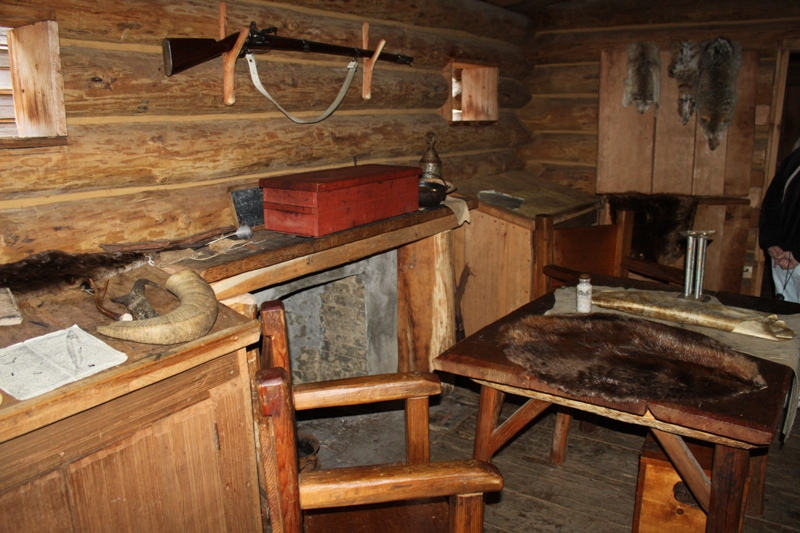
The expedition spent three miserable months here, mingling occasionally with the indigenous Clatsop and Chinook peoples but mostly growing moldy in the incessant rain and damp while being bitten by fleas, sewing new moccasins, and making salt in preparation for the return journey across the continent.
Oregon Travel Map















